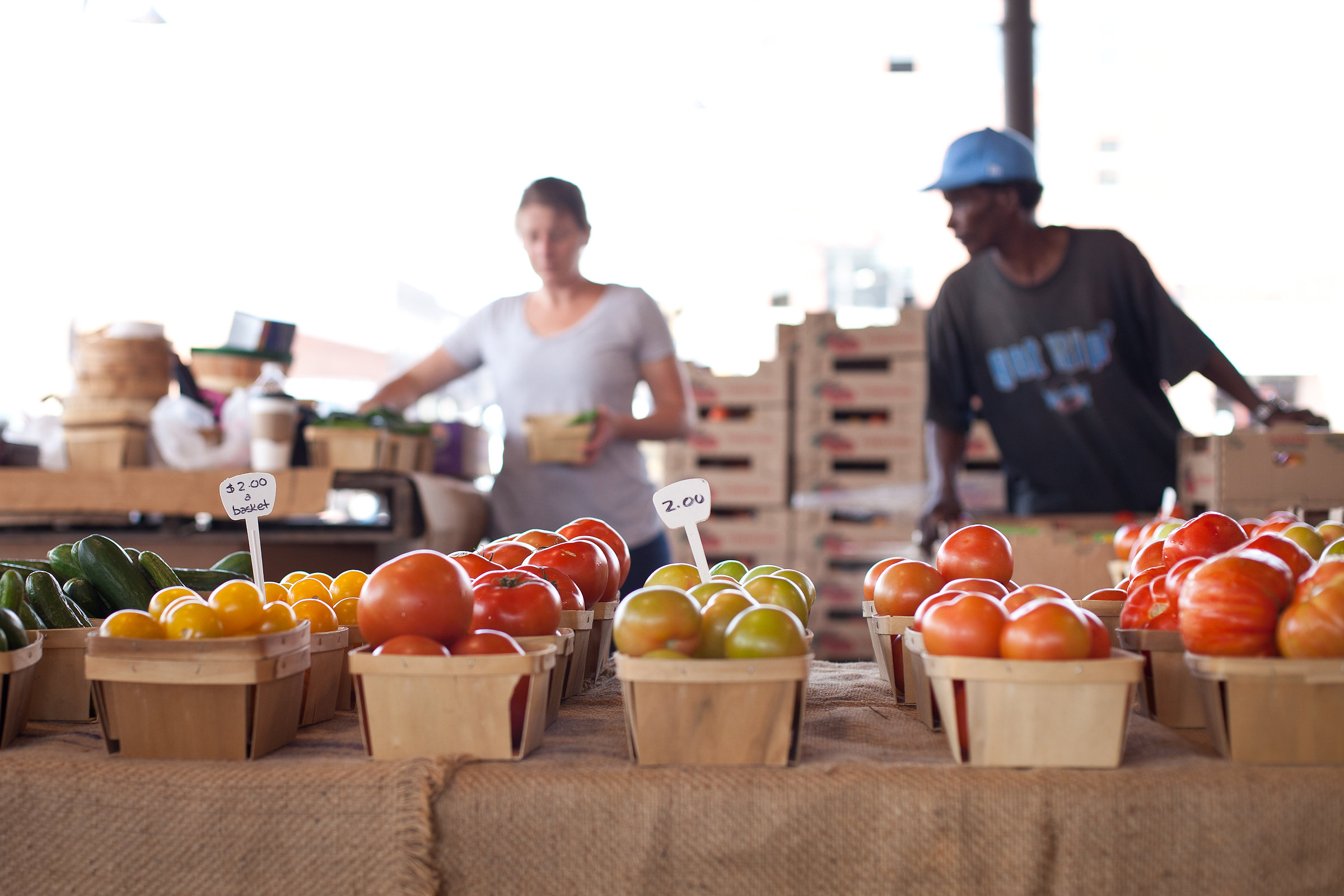Food Insecurity Nutrition Incentive Grant Program: A Primer
Author: Kate Fitzgerald
“It’s like getting $10 in produce for free. That’s much better than dollars!”
– Shopper at Ypsilanti farmers market
“I appreciate the fact that it’s putting healthy foods in people’s hands. I’m glad to have more business, but even aside from the sales factor, I’m happy knowing the people have the good food.”
– Farmer at Traverse City farmers market

It’s wonderful attitudes like these that make the interminable legislative process in Washington, DC worth sticking with. And every once in a while Congress acts like the responsive body good citizens deserve and federal agencies move fast to roll out Congress’ enlightened programs.
That’s the case with the new Food Insecurity Nutrition Incentive (FINI) grant program that, despite its uninspired name, is a bright light from the 2014 Farm Bill.
After seven short months designing the $100 million program, USDA published the first Request for Applications (RFA) on September 29 with applications due December 15.
By spring of 2015, low-income consumers participating in the Supplemental Nutrition Assistance Program (SNAP, formerly food stamps) around the country will be receiving about $30 million in incentives to purchase healthy fruits and vegetables.
FINI’s farm bill success was a testament to the compelling results of Fair Food Network’s Double Up Food Bucks, and the indefatigable efforts of advocates all over the country to convince legislators across the political spectrum that linking low-income consumers with family farmers growing healthy food is a common sense way to improve health and stimulate local economies.
(Those of you who enjoy reading legislative language can find FINI’s statutory language here, Section 4208 of the Agricultural Act of 2014.)
Now it’s up to groups around the country to use these new dollars to prove that SNAP families will eat more healthy produce when it’s affordable and available, and that connecting consumers directly with local, family farmers offers impressive social and economic impacts as well.
FINI Program Basics
FINI is a competitive grant program administered by USDA’s National Institute for Food and Agriculture in conjunction with the Food and Nutrition Service, the USDA agency that oversees the SNAP program. (Note that SNAP is federally funded but administered by state social service departments that have some leeway on program rules and design.)
There is a total of $100 million available to the program between now and 2018, but $10 million will be used for administration and to evaluate project results. The recent announcement of $31.5 million reflects combined funding for 2014 and 2015. There will be three more rounds of grants with $18 million available in 2016, another $18 million in 2017, and $22.5 million for work in 2018.
A comprehensive summary of the FINI program rules and design is available here, but several aspects of the FINI program are worth noting.
- While only nonprofit organizations and government agencies may apply for the federal funds, these lead organizations can partner with for-profit businesses (grocery stores, for example) to implement the programs.
- The program does not limit the use of incentives to fresh fruits and vegetables. Any variety of fresh, canned, dried, or frozen whole or cut fruits and vegetables without added sugars, fats, or oils, and salt (i.e. sodium) are permissible. (Same criteria for WIC program’s fruit and vegetable cash value vouchers for adults).
- FINI programs are not limited to direct marketing retailers [farmers markets, farm stands, community supported agriculture (CSA)], but there are priorities for direct-to-consumer marketing, locally and regionally produced, and culturally appropriate fruits and vegetables.

Priority for direct-to-consumer marketing and regionally produced fruits and vegetables reflect the bipartisan Farm Bill language and support the Secretary’s emphasis on regional food systems as engines of economic growth.
Direct marketing programs increase demand for smaller farmers selling in farmers markets, farmstands, mobile markets, and through CSAs. Emphasizing regionally produced fruits and vegetables will increase demand for mid-sized family farmers that have the capacity to produce the larger quantities grocery stores require.
The priority for culturally specific healthy foods is targeted to improve the catastrophic rates of diet-related health conditions in communities of color in particular, and the priority for high and persistent poverty communities, StrikeForce and Promise Zones will direct funds to the highest need areas.
FINI grants require a $1:$1 match (which may include in-kind investments). There are three grants categories to accommodate programs of different size and duration.
Applications for this first round of funding are due on December 15 and awards should be made in early April 2015.
To learn more, you can review Fair Food Network’s summary here or visit USDA’s website to access the full document.
Fair Food Network is submitting a statewide FINI application to continue the Double Up program in Michigan. Those interested in learning more about our work in Michigan can contact us at info@fairfoodnetwork.org







